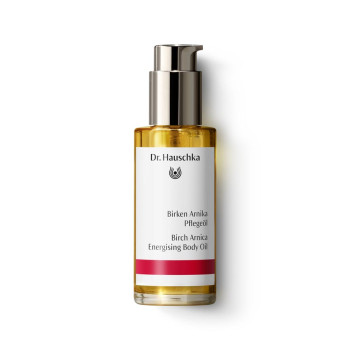
Mustard
Synonyms: Brown Mustard, Chinese Mustard, Indian Mustard, Mustard Seed, Red Mustard
Scientific Name: Brassica nigra L.
Family: Brassicaceae (mustard family/cabbage family)
Habitat
There are two distinct species of black mustard. One is found throughout Southern Europe and North Africa, the other in the Near East and Western Asia.
Constituents
Sinigrin, fatty oil, protein, mucilage.
Description
We are familiar with mustard in tubes or jars, or as the little round seeds found in a jar of pickled gherkins. But what does the plant which produces this seed look like? Black mustard, most often used for the condiment, is an annual, cultivated plant which can grow to a height of up to two metres, depending on variety, but can also be found growing wild on fallow land. From June to October its thin stems bear loosely grouped, erect, bright sulphur-yellow flowers. Each flower has four petals arranged in the form of a cross, hence the alternative family name, Cruciferae. From the flowers grow elongated pods containing four to ten dark-brown mustard seeds. The stalked leaves are elongated and entire at the top of the plant and pinnate lower down on the stem, and closely resemble those of its relative rocket (arugula).
Interesting Facts
The scientific name “Brassica”, meaning cabbage, may derive from the Latin praesecare = pre-cut. In earlier times mustard leaves were cut off before the seeds ripened and fed to livestock. The epithet “nigra” means black and refers to the colour of the mustard seed. The plant’s English name comes from the Latin “mustum” = must or new wine, and “ardens” = burning, because it was originally prepared by adding must to crushed mustard seeds.
When in the Neolithic period (New Stone Age) human beings began the transition from hunters and gatherers to a settled farming culture, mustard was just a weed which grew in the flax fields. The Germanic and Celtic tribes discovered that the leaves of the mustard plant are edible. Even today, its appetising young leaves and flowers make a healthy addition to salads, since they are rich in proteins, provitamin A, vitamin B, vitamin C and mineral salts. The Romans discovered how to make a spicy paste from the seeds. They liked using mustard in their food preparation and also spiced their wine with mustard seeds. Mustard was already recognised as a medicinal plant in ancient times. The Greek physician Dioscorides (1st century CE) recommended white mustard for internal irritations, among other things.
Mustard is also an important plant in distant cultures. The Japanese know mustard leaves as tempura, fried in beer batter with soy sauce. In Indian cuisine mustard is mentioned as a spice and vegetable as early as 500 years BC in the Acaranga Sutra, the first Anga Agama (canonical text) of the Indian Jain religious community. In addition to ghee (clarified butter), Indians use pressed oil of mustard seed for cooking and frying. When boiled with henna leaves mustard oil produces a hair oil beloved of Indian girls and women for scalp massage and believed to improve hair growth.
Our condiment mustard is usually prepared from black mustard. In a first step the seeds are fermented to generate allyl isothiocyanate, the active principle of volatile mustard oil. The subsequent procedures vary, with different regions producing very diverse flavours ranging from sweet to pungent or fiery, sometimes adding herbs or figs but sometimes just leaving the mustard pure. Yellowish mustard seeds are often found in shops. These come from the milder white mustard (Sinapis alba) and are also used in condiment mustard, but are of no medicinal importance since they have only a mildly laxative effect.
Apart from its culinary and medicinal importance, mustard has always played a role as protective plant. Western European cultures saw the yellow flowers as bearers of sunlight. Mustard was thought to invigorate the spirit and drive away melancholy. If a woman intended to be the boss in her household, she secretly took mustard and dill with her to her wedding mass and during the mass murmured a rhyme which translates as: “I have mustard, I have dill, husband when I’m speaking you be still!” In Indian popular tradition mustard is held to drive out demons and is added to the incense burnt for newborns and the first bath a mother takes after giving birth. At the festival for the dead and at the feeding of the ancestors, family members rub the palms of their hands and soles of their feet with mustard oil.
Mustard is also much referred to in proverbs. In English we “cut the mustard” if we match expectations. In German, making uninvited comments is known as “adding one’s mustard”. And to “sugar the mustard” is to sweeten unpalatable truths.
The plant from another perspective
As a typical representative of the cruciferous family, mustard is a plant that colonises empty, fallow spaces with vigour. Its vitality is also expressed in the sulphurous volatile mustard oil, the irritant active component of mustard which is only released when the seeds are broken. By stimulating metabolic processes and blood flow, mustard acts as vigorously on the skin and organs of motion as it does when colonising fallow land.
The plant in our products
WALA uses cold-pressed, unadulterated mustard oil from organic black mustard seed. This mustard oil is manufactured for WALA by the Walz Oil Mill, which is located in the Black Forest in Southern Germany and still produces oil in the traditional way. It uses the so-called screw press process which cold presses the oil from the seed very gently and effectively, without the need for chemical additives. Mustard oil is a component of:

